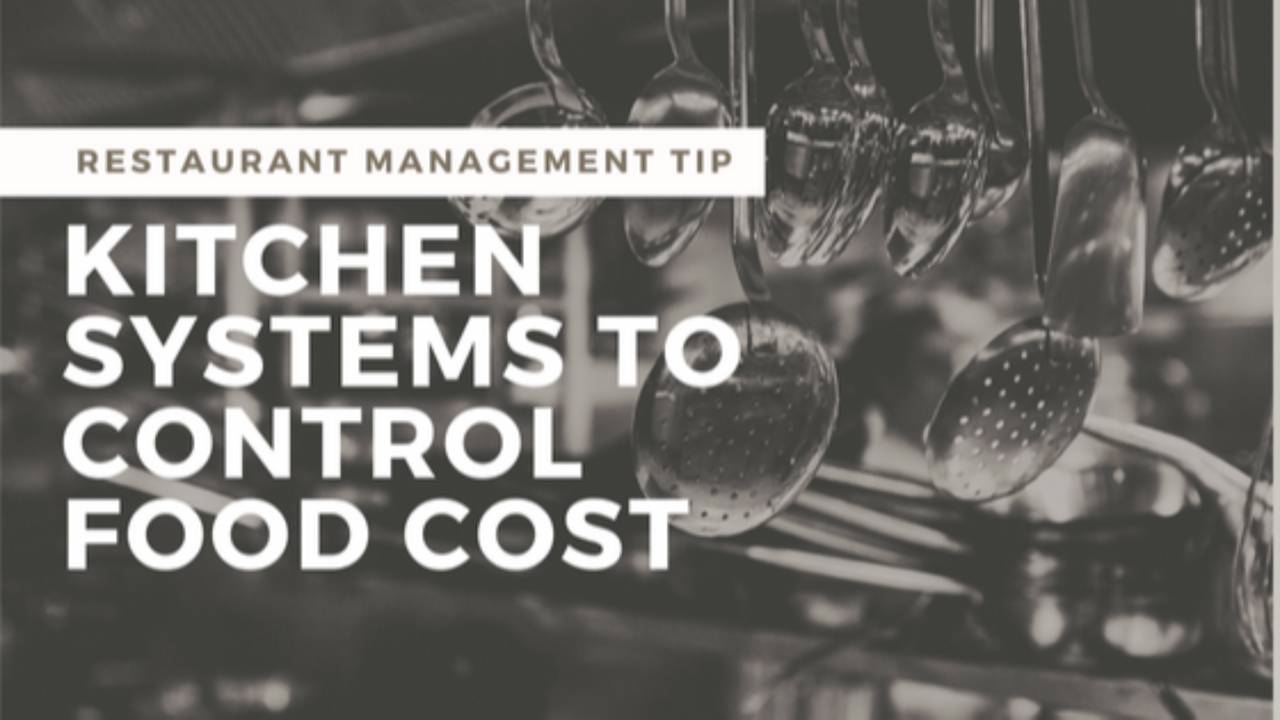Kitchen Systems Every Restaurant Needs to Use to Lower Food Cost

Here's your restaurant owner reality check. If your food cost is higher than you think it should be, I’m willing to bet you're not managing your kitchen correctly. It means you don't have the right systems in place to control your food cost and if you have recipe costing cards, you don't know what to do with them. Let’s talk about the systems you need reduce your food cost and prevent theft and ensure you hit your target food cost.
Use these kitchen systems to control your food cost and lower your food costs to ensure you are going to make the money you deserve.
Key item tracker: Count five to 15 items every shift to make sure those items are not stolen. Start with what you have, bring in what your prepped or purchased, and what you ended with. Go to the POS system, find how many you sold and see the difference. It should all match. If there's a variant, it better be on the waste tracker. If not, you have worse than theft. You have managers not using the systems.
Waste tracker: Write down things that are wasted. Whatever it is – from a pan of rice, a case of tomatoes, a burnt steak, an incorrect order, track it. It doesn't matter why it was wasted. It's a proactive management tool to not only know the product value wasted, but when you see there's a problem – like burning food on the line – it's a proactive system that allows you to train and fix the problem.
Restaurant Checkbook Guardian: This is a purchase allotment system, where you give your managers – based on your budget, your forecast, your actual purchases, and your daily sales report – how much money they can spend on the next order to be within budget. By doing so, you can put your kitchen manager, your chef on a budget, with a little leeway. Then, if they want to go over that budget, they need to come to you with a reason and/or a solution and get permission.
If you can stop dumbass mistakes with these systems, you can reduce theft and put your kitchen team on a budget. You can see how quickly I'll guarantee you a 2-3% drop in your food costs alone without any other systems.
Lower costs even more with the following systems:
- Time/temp checklist to make sure we don't lose product because it's spoiled.
- Practice of mise en place, which is a French term for having all your ingredients measured, cut, peeled, sliced, grated, et cetera, before you start cooking. Pans are prepped, mixing bowls, tools, equipment, are set out.
- Portion controls on the line: Have the right size ladles for sauces, which saves you money and also provides consistency in the food serve, which is an important part of Restaurant 101.
- Food and beverage control software: You need software for recipe costing cards and to know the cost of every item you sell. There are many benefits to software and it’s worth the investment. You can set up shelf-to-sheet inventory to take inventory on a weekly basis in under an hour. You can create order guides with par levels so people aren't guessing what to order. They know what they need because the system tells them.
- Menu engineering: Using recipe costing cards and your product mix, you can find your ideal food cost and use menu engineering science to reduce your food cost anywhere from 3-7% the first time through.
With recipe costing cards and menu engineer at minimum on a quarterly basis, you can offset what's happening in the marketplace. To ensure all these systems get used every day, every shift, there must be a chef, manager, line supervisor, or key employee on the line, whose job is to make sure these systems are used, or they'll just go away, just as fast as you put them into place.
Be sure to visit my YouTube channel for more helpful restaurant management video tips.




